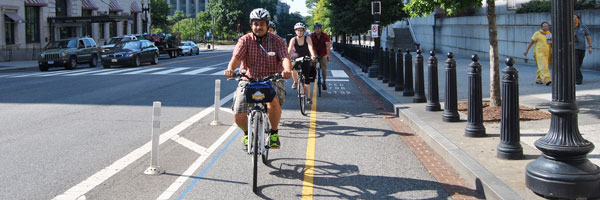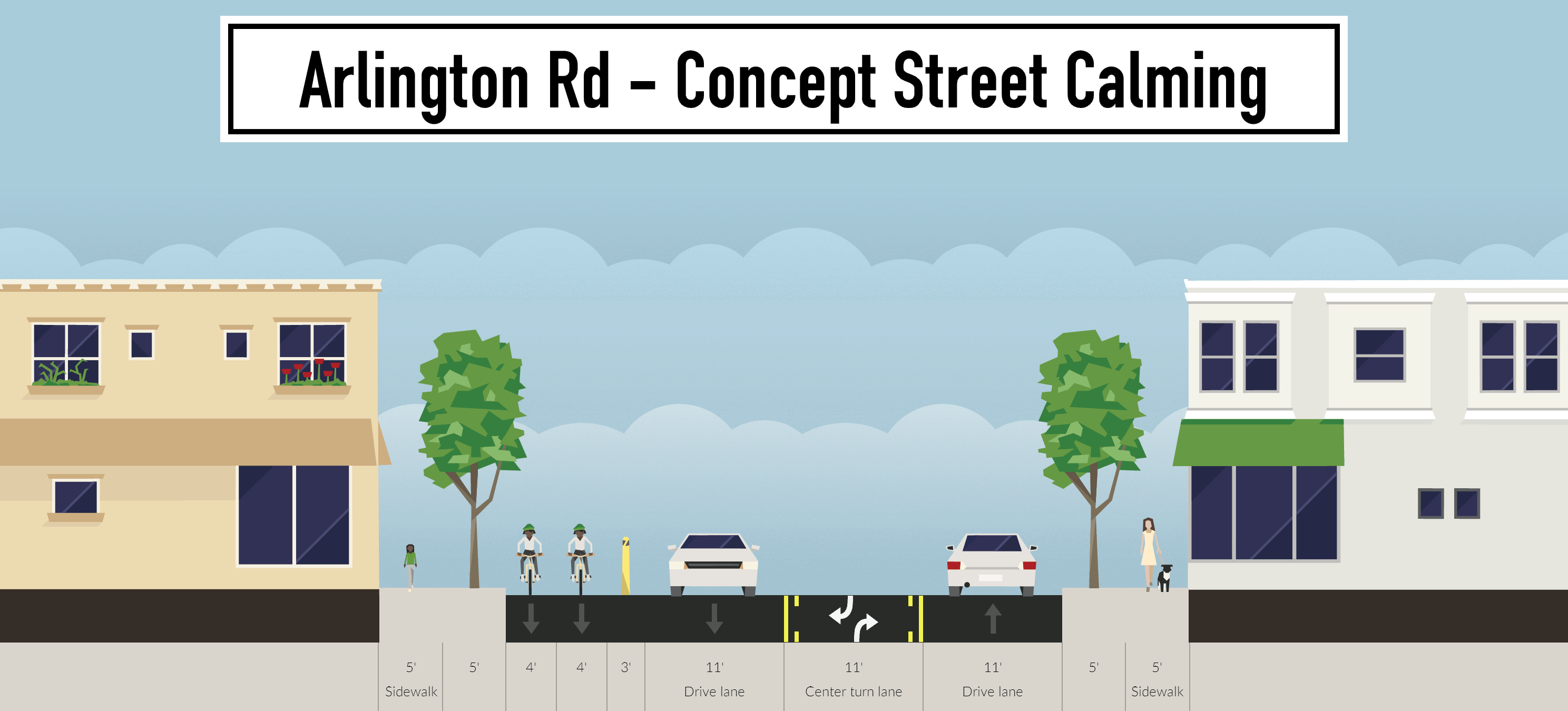People First on Arlington Road

A Safer and Calmer Connection for Downtown Bethesda
Opportunity
Downtown Bethesda and the surrounding neighborhoods are comprised of a vibrant retail and office center surrounded by a combination of high density residential and single family homes. The transition between these neighborhoods occurs along Arlington Road.A Street with Safety Issues
Arlington Road has history of safety issues for drivers, pedestrians and bicyclists. Many pedestrians have been struck by drivers including a mother with a baby stroller in a crosswalk. Walking to Bethesda Elementary School is unsafe. Drivers weave frequently between lanes due to the lack of left turn lanes, and this increases the risk of crashes. The nearby Capital Crescent Trail and the Bethesda Trolley Trail are two of the busiest bicycle routes in the County. Although only two miles apart, all potential on-road connections between the trails are congested and risky for cyclists and pedestrians. Capital Crescent Trail is heavily used by cyclists, pedestrians, dog walkers and families. Multi-use is great, but also it increases risk for conflicts and injury.Build a Solution
A redesign of the street to facilitate better traffic movement and turns, decrease crossing distances, and provide a dedicated protected bike lane would benefit residents, employees and visitors to the area. A key part of the redesign will be to build a protected bike lane on Arlington Road.- Bike lanes will buffer the sidewalk from fast moving car traffic creating a more inviting walking environment. Arlington Road currently has plenty of off-street parking and on-street parking. There will be no impact to car parking.
- A dedicated turning lane will provide a safer environment and more predictable behavior for turning movements smoothing automobile traffic flow and reducing crash risk.
- A protected bicycle lane would complete a significant piece of the existing regional bike trail network by connecting the Capital Crescent Trail to Bethesda Trolley Trail in Bethesda.

Just one idea of how to build protected bike lanes on Arlington Road. Created using Streetmix.
Download the one-page campaign fact sheet (PDF)
Quick Facts
- A redesign of Arlington Road will benefit pedestrians, drivers and bicyclists.
- Arlington Road defines a transition border between urban and more suburban density in Bethesda. It’s current design acts as a barrier for people walking and biking, and still fails people driving due to lack of dedicated center turn lanes.
- 19% of residents in the zip code surrounding Arlington Road work within the same or an adjacent zip code. Creating safe places to walk and bike will reduce dependency on driving and ease traffic congestion.
- A protected bike lane is one important element of the design given the benefits it can provide to both people on bicycles and those who arrive by other means. The redesign of Arlington Road will help support a people oriented environment and act as a transition to neighborhood streets from Downtown Bethesda for walking and biking.
- There is no dedicated bike link from the National Institutes of Health campus (a major regional job center) to the nearest commercial district, downtown Bethesda, despite the distance separating the two being less than 2 miles apart. Connecting jobs and retail is vital.
- The Capital Crescent Trail is the most traveled multi-use trail in the region with 1.3 million annual users. Many use the trail for commuting to work.
- National Institutes of Health is a major regional job center and downtown Bethesda is a large commercial district. Connecting jobs and retail is vital.
- Capital Bikeshares, a highly successful mode of transportation for visitors and residents, has recently expanded service to Bethesda. There are no protected bike lanes for use by Capital Bikeshare riders in downtown Bethesda. Studies show increase access translate to increase sales of retailers located near protected bike lanes.
You must be logged in to post a comment.